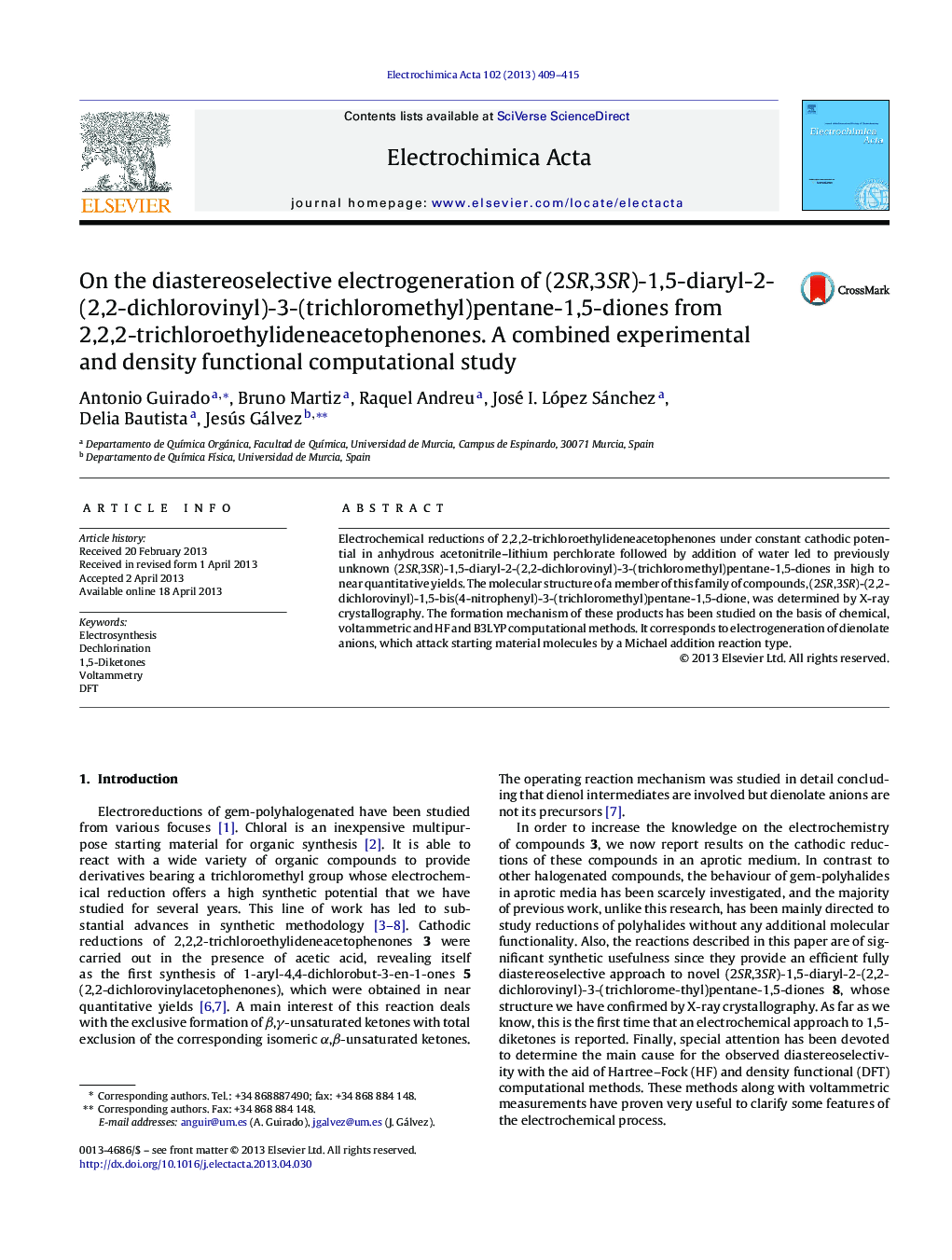| Article ID | Journal | Published Year | Pages | File Type |
|---|---|---|---|---|
| 187301 | Electrochimica Acta | 2013 | 7 Pages |
•Novel 1,5-diketone derivatives were obtained involving electrogeneration of dienolate anions followed by Michael addition reactions.•The first electron transfer corresponds to an irreversible rate-determining step.•Voltammetric and B3LYP/6-31G(d) studies suggest that the electron transfer and the cleavage of a carbon-chlorine bond is a concerted process.
Electrochemical reductions of 2,2,2-trichloroethylideneacetophenones under constant cathodic potential in anhydrous acetonitrile–lithium perchlorate followed by addition of water led to previously unknown (2SR,3SR)-1,5-diaryl-2-(2,2-dichlorovinyl)-3-(trichloromethyl)pentane-1,5-diones in high to near quantitative yields. The molecular structure of a member of this family of compounds, (2SR,3SR)-(2,2-dichlorovinyl)-1,5-bis(4-nitrophenyl)-3-(trichloromethyl)pentane-1,5-dione, was determined by X-ray crystallography. The formation mechanism of these products has been studied on the basis of chemical, voltammetric and HF and B3LYP computational methods. It corresponds to electrogeneration of dienolate anions, which attack starting material molecules by a Michael addition reaction type.
Graphical abstractFigure optionsDownload full-size imageDownload as PowerPoint slide
